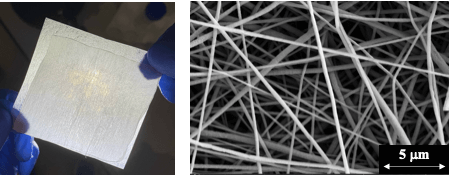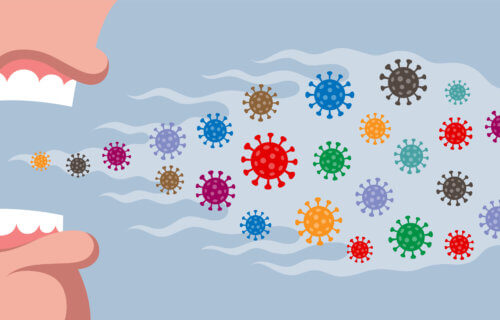RIVERSIDE, Calif. — Although many regions are rolling back their COVID-19 mask requirements, there are still plenty of situations which call for extra protection. Now, researchers have developed a nano-fiber filter using polymer nano-threads which can capture 99.9 percent of all coronavirus aerosols they encounter. That’s far more protection than any current mask can provide.
“Our work is the first study to use coronavirus aerosols for evaluating filtration efficiency of face masks and air filters,” says corresponding author Yun Shen, a UC Riverside assistant professor of chemical and environmental engineering, in a university release. “Previous studies have used surrogates of saline solution, polystyrene beads, and bacteriophages — a group of viruses that infect bacteria.”
Engineers from UC Riverside and The George Washington University investigated and compared how well surgical and cotton masks, a neck gaiter, and electrospun nanofiber membranes could contain and destroy coronavirus aerosols. Results show the cotton mask and neck gaiter eliminated roughly 45 to 73 percent of the aerosols. Meanwhile, the surgical mask took care of 98 percent of virus particles. Ultimately, the electrospun nanofiber membranes are the clear-cut superior option with 99.9 percent efficiency.
Why is it so important to stop aerosols?

Aerosols, or tiny droplets which linger in the air, are major drivers of COVID-19 infection according to both the CDC and World Health Organization. Human release aerosols whenever they breathe, talk, cough, or sneeze. Now, most of the time they’re harmless, but when an individual is COVID-19 positive, those tiny droplets are viral and contagious. Previous studies reveal these infectious particles can travel at least six feet without a protective covering to block them.
Most research conducted thus far during the pandemic on aerosols hasn’t actually involved real COVID-carrying particles. Doing that would of course put researchers at risk. So, most studies have examined other materials that mimic both the size and behavior of coronavirus aerosols. This research, though, took things a step further by using both an aerosolized saline solution and an aerosol containing a coronavirus in the same viral “family” as COVID-19. This strain however, only infects mice.
Next, researchers created a nano-fiber filter by “sending high electrical voltage through a drop of liquid polyvinylidene fluoride to spin threads about 300 nanometers in diameter.” That process produces fibers which are roughly 167 times thinner than a human hair. This also produces pores measuring only a couple of micrometers in diameter on the nano-fiber’s surfaces. Those tiny pores are why the filter can capture COVID aerosols so well.
A cheaper way to make better masks?
Study authors note that production process, called “electrospinning,” is inexpensive and could potentially be recreated on a mass scale to produce nano-fiber filters for personal protective equipment and air filtration systems.
“Electrospinning can advance the design and fabrication of face masks and air filters,” Shen concludes. “Developing new masks and air filters by electrospinning is promising because of its high performance in filtration, economic feasibility, and scalability, and it can meet on-site needs of the masks and air filters.”
The study appears in the journal Environmental Science & Technology Letters.
